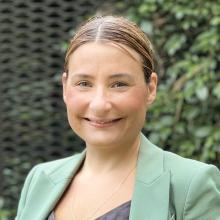Oral
A longitudinal health study of Special Olympics athletes: Tracking physical activity and fitness over time
Background: Physical activity (PA) promotes positive physical and mental health. Despite the benefits, people with intellectual and developmental disabilities (IDD) engage in low levels of PA due to systemic barriers such as cost, transportation, accessibility, and awareness of the need. Emerging evidence suggests that Special Olympics (SO) is a promising setting to achieve the health benefits of PA and fitness for people with IDD.
Purpose: The purpose of this paper is to describe the development and implementation of a longitudinal health study to gain a better understanding of the impact of SO participation on health status, fitness, and PA levels of athletes with IDD.
Methods: SO is collaborating with four SO state Programs in the US to implement a prospective cohort study to understand the health status of adult SO athletes. In late spring 2024, each SO Program will recruit 30 SO athletes for study participation. Enrolled athletes will complete in-person biometric and fitness assessments. SO athletes will receive wearable devices to track PA metrics (step count, heart rate, sleep, and sedentary behavior). Ecological momentary assessment will collect daily PA and SO participation data.
Results and Conclusions: Given the barriers that exist for people with IDD to engage in appropriate levels of PA, this study will provide insight into the health status of SO athletes, associations between health status and SO participation, and the feasibility of data collection methodologies and validation of outcome measures. Preliminary data will be included if accepted.
Practical implications: People with IDD lack access to opportunities that promote PA and fitness. This study will demonstrate the benefits of SO participation and best practices for the collection of PA and fitness data for people with IDD.
Funding: This work is funded through a cooperative agreement between SO and the Centers for Disease Control and Prevention (CDC).
Submitting Author
Ashlyn Smith
Population Group
Disabled people
Study Type
Method development
Setting
Sport



